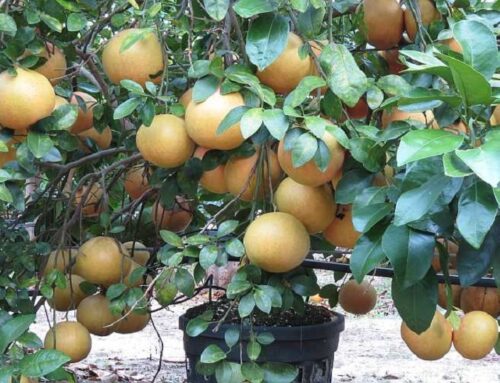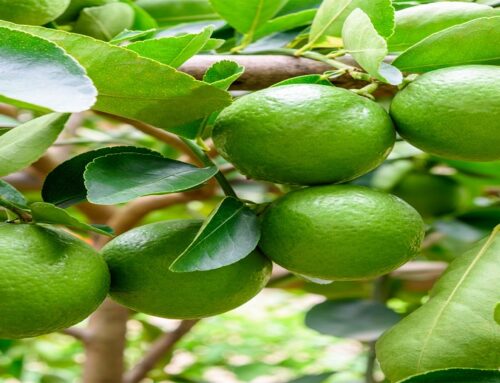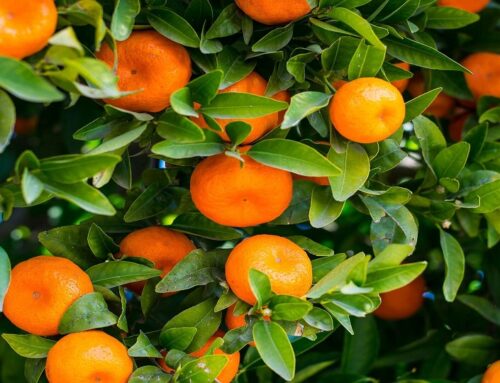There are many sapota cultivars available for both home gardening and commercial growing purposes.
Cultivars of Sapodilla: Based on the shape of the fruits, there are ‘round-shaped’ sapota and ‘oval-shaped’ sapota. Otherwise sapota cultivars are named after the place where they are originated.
Major Indian cultivars of sapodilla plants are Cricket ball, Kalipatti, Calcutta round, Kirthibharathi, Dwarapudi, Pala, PKM-1, Jonnavalasa I & II, Vavi Valsa, Baramasi, Pilipatti,DHS-1, DHS-2, Dhola Diwani, Murabba, Guthi, Co 1, Co 2, Baharu, Gandhevi Barada, Bangalore, Pot Sapota, Gavarayya, Thagarampudi, Ayyangar, and Vanjit.
Among these, Pot sapota an early-bearing dwarf cultivar and can be grown as a pot specimen. Economic life of this cultivar lasts up to 10 years.
In Indonesia, sapota plants are classed in two main groups based on the size of the tree: Sawo maneela (normal-size trees) and Sawo apel (dwarf shrub-like trees). Some popular cultivars in Philippines include ‘Ponderosa’, ‘Java’, ‘Sao Manila’, ‘Native’, ‘Formosa’, and Rangel.
Some popular cultivars in Mexico are ‘SCH-02′,’SCH-03′,’SCH-07’, ‘SCH-08’, and ‘SCH-28’. Some popular cultivars in the USA include Brown Sugar, Prolific, Russel, Tikal, Boetzberg, Larsen, Morning Star, Jamaica 8, and Jamaica 10.
Growing Requirements: A detailed description of growing practices for sapota plants is given below:
Site/Location: The sapodilla plant prefers open spaces and a sunny and warm location which is preferably frost-free throughout the year.
Climate: Sapodilla plants can only survive in a tropical climate; they thrive well in warm (10-350C), humid (70%) environments; a coastal climate is most suitable. A temperature below freezing temperature kills the plants. Preferred altitude is about 1200 meters from sea level. Under suitable climate, sapodilla plants can be cultivated throughout the year.
Soil: Sapota plants can be grown in any good soils. However, well-drained, loose, fertile sandy loam soils are the best for growing sapota plants. Alluvial soils, red laterite soils and medium black soils with good drainage are equally good. Sapota plants are tolerant to soil salinity.
Propagation: Propagation of sapota plants are by seeds. Sapota seeds are viable for a long time and germinate quickly. Seedling trees take a long time, up to 7 years to bear fruits. Some growers try rooted cuttings and air layering also for propagation of sapota plants. However these methods are not highly successful. Therefore sapodilla plants are commercially propagated by vegetative propagation methods such as grafting and budding. Veneer grafting is proven to be highly successful in sapota plants. Grafted/budded cultivars are dwarf and are suitable for commercial growing purposes. Micro propagation option is also being explored now.
Field Preparation: Field is tilled and ploughed and then leveled. Organic matter/humus is added to the top soil to enhance soil fertility. Alternatively, green manures may be added to increase soil fertility. Before planting sapodilla seedlings, a wind break needs to established with tall, strong trees such as mango trees or silver oak trees to protect the growing plants from seasonal winds.
Planting: Planting of seedlings/grafts is done in well-prepared pits of one cubic meter size (1 x 1 x 1 meter). Pits may be prepared and exposed to weather for 2-3 months prior to planting. Best time for planting sapota plants is at the onset of monsoon. At the time of planting, pits are filled with well-rotten compost or farmyard manure, 3 kg of superphosphate and 1.5 kg of muriate of potash. Square system of planting is best for flat lands while contour planting may be adopted for lands with slopes. Minimum 9 meters of plant to plant to distance should be maintained for giving sufficient space for the trees to branch out. Light watering is done soon after planting.
Fertilizer Application and Irrigation: Standard recommended rate of fertilizers is 50-75 kg of farmyard manure , 1 kg of N (nitrogen), 0.5 kg of P2O5 (phosphorus) and 0.5 kg of K2O (potassium)/tree/year. This rate can be regulated depending upon the tree age, soil nutrient status etc.
Sapota plants are fairly drought-tolerant and can be raised as a rainfed crop. If sapodilla plants are raised as a rainfed crop, all fertilizers are applied before the onset of monsoons. If sapodilla plants are raised as an irrigated crop, fertilisers are applied in two half doses: first application is at the beginning of monsoon (June-July) and second application is during Oct-Nov. During winter months irrigation may be given once in a month and during summers, irrigation may be given at 15 days intervals.
Pruning: Pruning is an important practice in sapodilla cultivation. Pruning is necessary in large plants to expose the trees to sunlight. It is also necessary to remove the dead and diseased branches. Regular pruning operations regulate the vegetative growth of the plants so that plant productivity and fruit quality are increased. In dwarf cultivars, pruning may not be required.
After care: Weeds are a major problem in young orchards. Proper cultural practices may be adopted to control the weeds. Fruit drop is another very serious problem. Spraying plants with plant growth hormones such as Gibberellic acid at the time of flowering may prevent this issue up to some extent.
Insect-Pests: Major insect-pests of sapodilla plants are leaf miners and hairy caterpillars, mealy bugs, and stem borers and bud worms. Stem borers can be controlled by spraying kerosene or diesel oil in the holes made by borers and plastered these holes with wet mud. For controlling other insect-pests, pyrethrum-based pesticides may be used.
Major Diseases: Leaf spot (Phleopheospora indica), base rot (Ceratocystis paradoxa), heart rot (Phytophthora parasitica), anthracnose (Colletotrichum gloeosporioides) and Sooty mould are some of the major diseases found in sapodilla plants.
Sooty mould can be controlled by spraying of 100g starch in 18 liters of water. For controlling other diseases, organic fungicides or any other environmentally-safe disease control measures may be used.
Crop Maturity: Sapota starts bearing sparsely from third year of planting onwards. Economic yield can be obtained from fifth year of planting onwards. Two main flowering seasons are: October- November and February-March. Correspondingly, there are two harvesting seasons: first harvest is in January-February and the second harvest is in May-June. In other words, sapota takes about 4 months from flowering to fruit maturity.
Harvesting: It is very difficult to predict correct maturity stage in sapota fruits. Normally, fruits are harvested when the fruit skin turns to brown colour and they can easily be detached from the plant. At correct maturity stage, fruits do not produce much latex or white milk. When fruits are ready for harvest, they may be hand-picked or harvested with a commercial harvester.
Sapota is a climacteric fruit and hence mature, firm fruits are harvested before the fruit pulp turns soft and mushy. The fruits are ripened during storage.
Yield: In high density plantation, yield is 4 tons/acre in the fifth year; 6 tons/acre in the 7th year and 8 tons/acre from 8th to 15th year. Economic life of a sapota orchard is 15 years.
Note: 1 ton is 1000 kg. 1 acre is approx. 4000 sq. m.
Storage of Fruits: Sapota/sapodilla fruits are highly perishable in nature and therefore, ripe fruits need to be consumed within a couple of days after harvesting. The fruits should be consumed when they are firm-soft, not mushy.
The fruits harvested at proper maturity stage (firm, ripe fruits) may be stored at room temperature up to 7 days maximum. They ripen within 5-6 days after harvesting; during ripening process milky latex completely disappears from the fruits. Storage life of fruits can be increased up to 5 weeks by storing them at 200C after removing ethylene and providing 5-10% CO2 atmosphere.
Grading and Packing: Grading is based on the size of the fruits: three grades are, large, medium and small. Fruits are packed in cardboard boxes, wooden containers or bamboo baskets with a padding material (straw, clothes, cotton etc) and ethylene absorbents.
Processing and Preservation Techniques for Sapota Fruits: sapota fruits are peeled and dehydrated in order to increase the shelf-life of the fruits. Both air drying and freeze drying techniques may be tried.
Check out our publishing services here…
We publish top quality videos on various ‘Food & Agriculture’ topics. You may subscribe our video channel here…






